In morning sun, butterflies flitted beyond my writing window, among palm fronds and the tangled vines creeping through and over a fence separating our yard from the neighbour’s. A female Cairns birdwing with broad wings patterned in black, yellow, and white, as opposed to the male’s brilliant emerald and black, floated past. A Ulysses swallowtail, the essence of tropical exotic beauty, its brilliant, irridescent blue wings bordered in velvety black, flapped erratically back and forth between yards and then lighted on a purple blossom of the tangled vine.
With slow, smooth motions, I left my desk and, with camera in hand, stalked the swallowtail, creeping to within a half dozen steps of it, where I saw that its wings were partly folded, obscuring its stunning upperwing colours. I stepped closer and – sure enough – the edgy swallowtail lifted into bouncing, zig-zag flight and disappeared from sight. I’ve lost count of the number of times I’ve attempted to photograph a Ulysses swallowtail, all without a smidgeon of success, not even one blurry image.
Both the Cairns birdwing and Ulysses swallowtail belong to the butterfly family Papilionidae, one of six families of butterflies that occur in Australia.1 Because so much of this country is comprised of arid landscape characterized by low moisture availability and hot temperatures, which are unattractive to butterflies, Australia has a relatively small butterfly fauna of 416 species.2 Very few occur in the dry heart of the continent; rather, most species are found in a belt paralleling the Top End and east and southeast coasts, with another major butterfly region occurring in southwestern Western Australia.3 Tropical rainforests, with their incredible diversity of plant life, are prime butterfly habitat, and thus, coastal North Queensland, particularly Cape York Peninsula, is the best butterfly habitat in the country.3 Townsville, located just past the south end of the wet tropics climatic zone, is in itself a bit of a butterfly hotspot, claiming 145 species, 35% of the country’s total.4
Butterflies, with their daytime habitats and beautiful colours, are among the best known and best loved of insects. They are also ‘indicator species’ whose presence and absence track climate change and pollution.5 Within Australia, butterflies are considered ‘flagships’ for the identification of habitats critical to the preservation of continental biodiversity.5 Nearly half of Aussie butterflies are endemic species occurring nowhere else in the world,6 and the conservation of these relatively large and very lovely lepidopterans provides impetus for the conservation of other uniquely Australian invertebrates that may be less obvious and attractive.5
To date, I’ve identified 13 species of butterflies in the Townsville area, although I’ve seen many more which simply flew too quickly or erratically for me to photograph them or jot down identifying characteristics. Because identification for many species of butterflies requires a careful look at upper and lower wing surfaces, I’ve found that photographs are indispensable for identification, although potential subjects are rarely accommodating. Some, however, are, and their digital portraits have enabled me to readily identify them, as well as to distinguish between males and females of the same species, which, like songbirds, often possess different colouration.
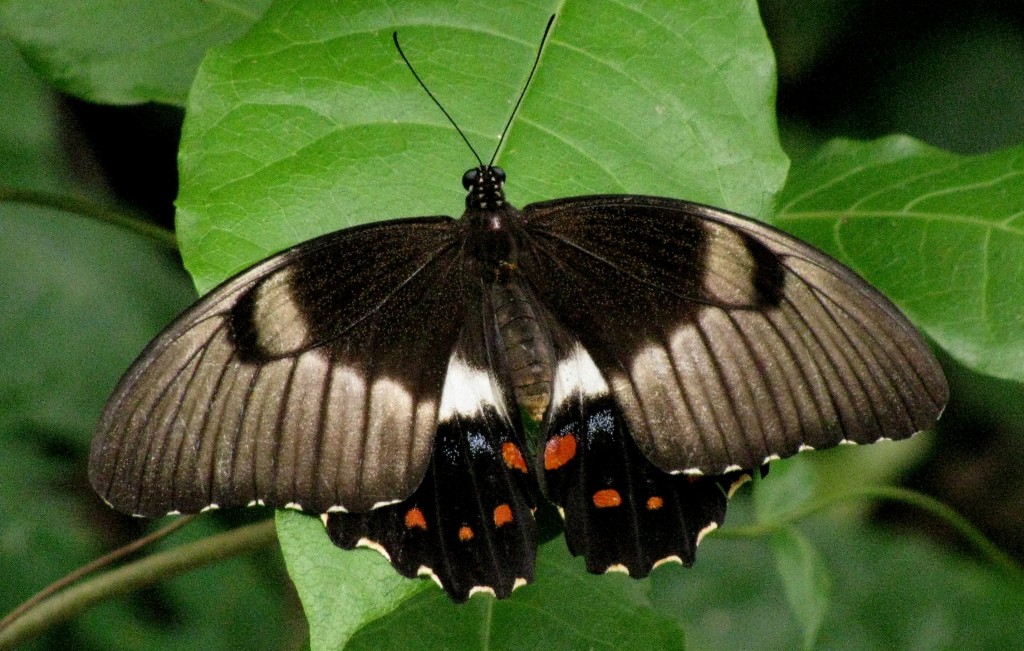
Female Orchard Swallowtail (© Magi Nams)
The butterflies I’ve so far identified belong to three of the six Australian butterfly families. The first of these is the Papilionidae, a family of large butterflies that feature black prominently in their colouration, along with white, blue, green, and brown. I’ve already mentioned the gorgeous Cairns birdwing and Ulysses swallowtail as members of this family, but I’ve also frequently seen ochard swallowtails and clear-winged swallowtails, both in our yard and elsewhere, and have observed blue triangles in rocky terrain in Paluma Range National Park and at the summit of Mount Stuart.
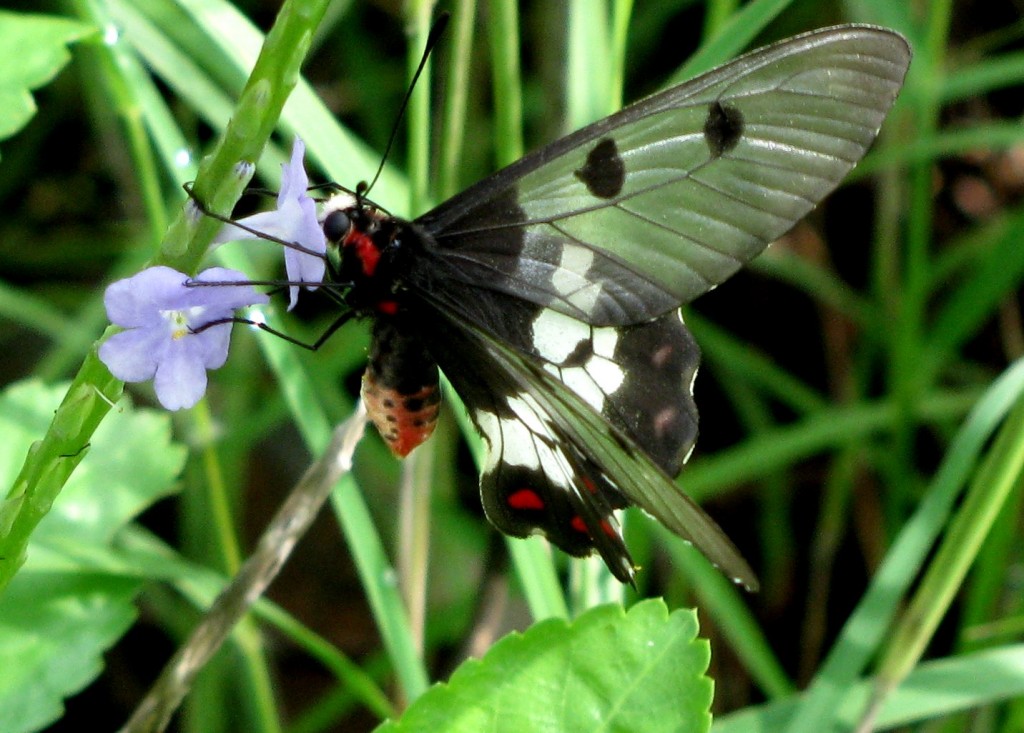
Male Clear-winged Swallowtail (© Vilis Nams)
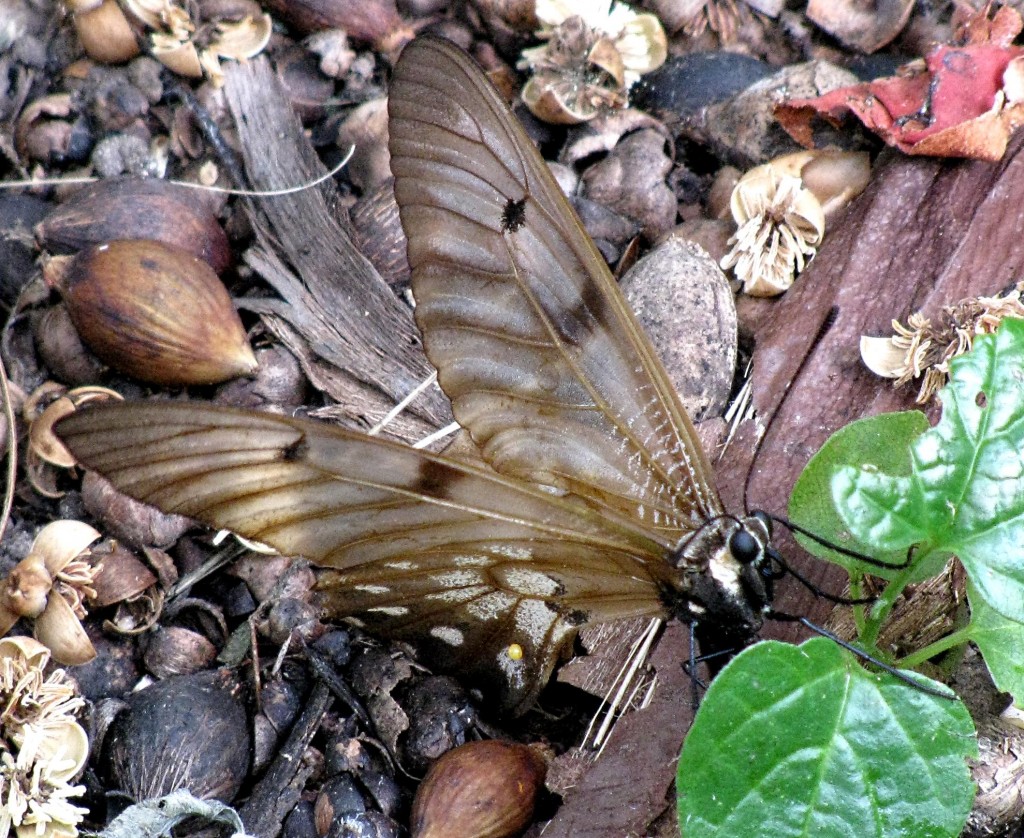
Female Clear-winged Swallowtail (© Magi Nams)
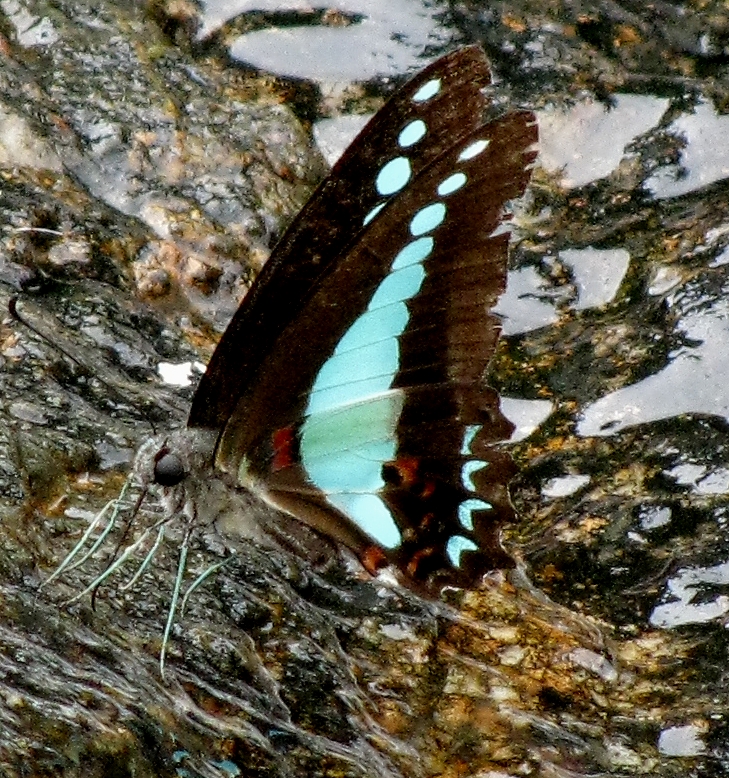
Blue Triangle (© Magi Nams)
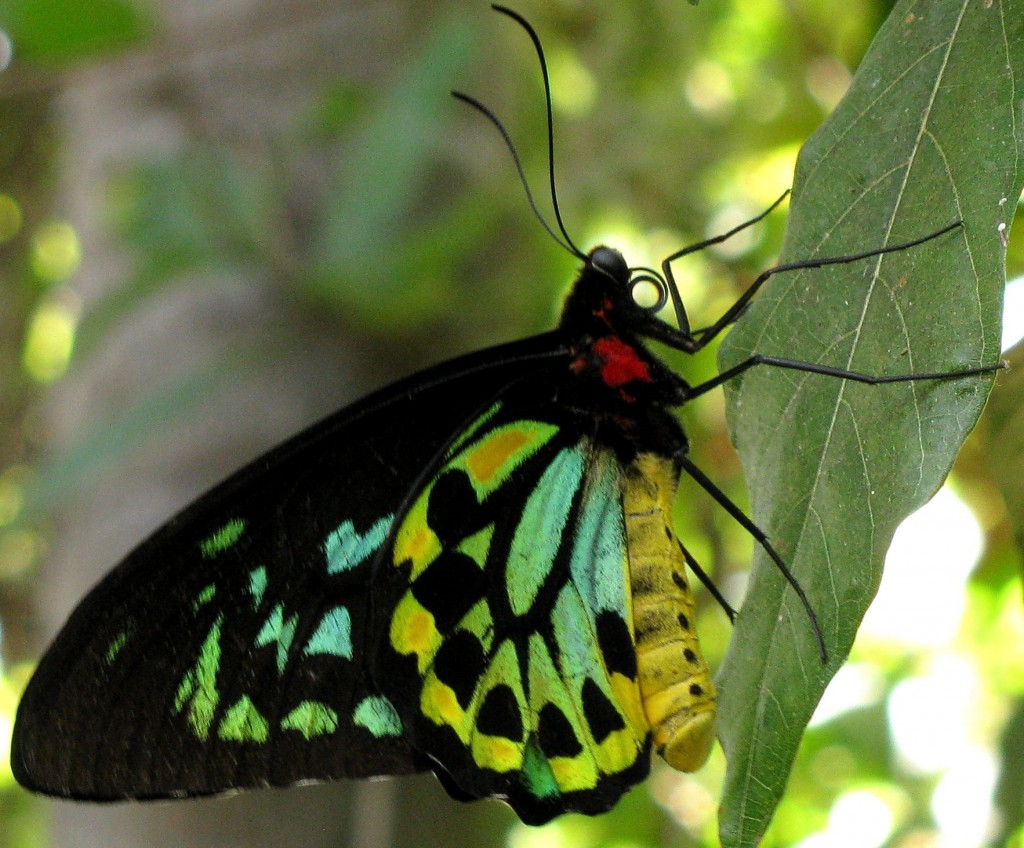
Male Cairns Birdwing (© Magi Nams)
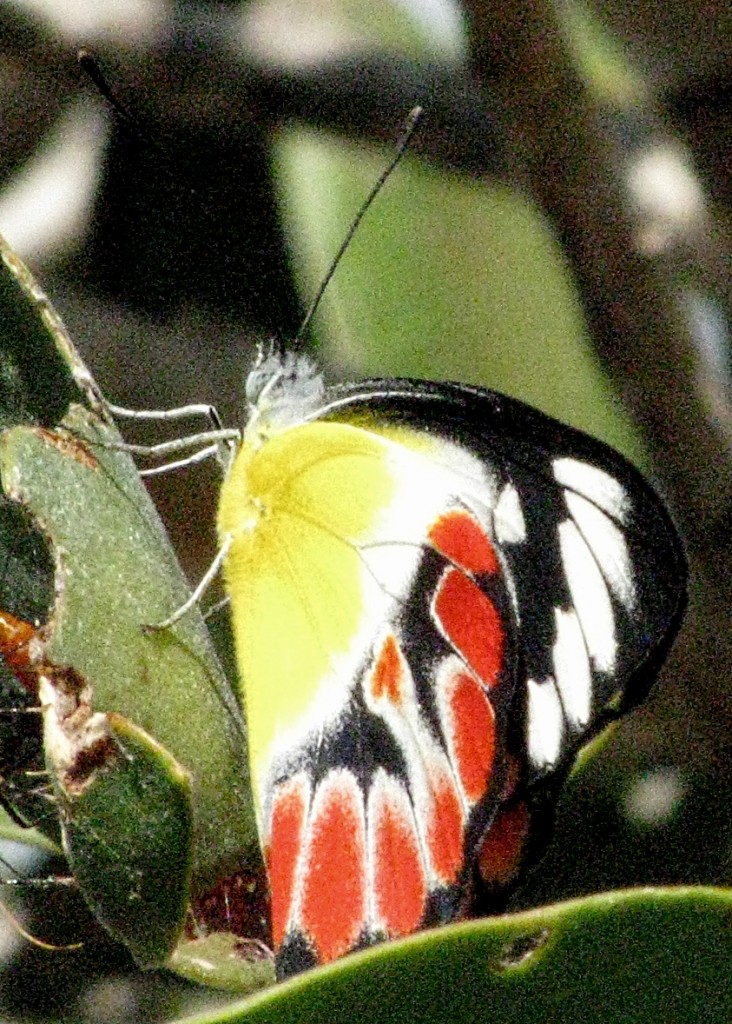
Male Scarlet Jezebel (© Magi Nams)
A few other butterflies I’ve observed and identified belong to the family Pieridae, which is a family of small to medium-sized butterflies with plenty of white or yellow in their colouration. Small grass-yellows were so abundant along the Alligator Falls bushwalk that they resembled wee yellow blossoms bobbing in the wind. Red-banded jezebels fed on nectar of flowering gum trees in the Ross River Bush Gardens, and I spotted a scarlet jezebel and yellow albatross in the shrubs and herbaceous vegetation beside the Bald Rock carpark in Townsville Town Common Conservation Park.
The rest of the butterflies I’ve identified belong to the family Nymphalidae, a collection of medium to large butterflies, most of which feature brown or orange in their colouration. I spotted purple and brown crows on a stroll through the Ross River Bush Gardens one afternoon, and an orange bush-brown and chocolate argus in Palmetum Park on another. A blue-banded eggfly captivated me in our yard, and the Bald Rock carpark area in The Common is a good spot to find lesser wanderers and swamp tigers. Vilis, Janis, and I observed the only blue argus I’ve seen in dense grass beside the trail to Shelley Beach, and subtly exquisite blue tigers hung from trees and floated in the air by the thousands – perhaps millions – near Horseshoe Bay on Magnetic Island.
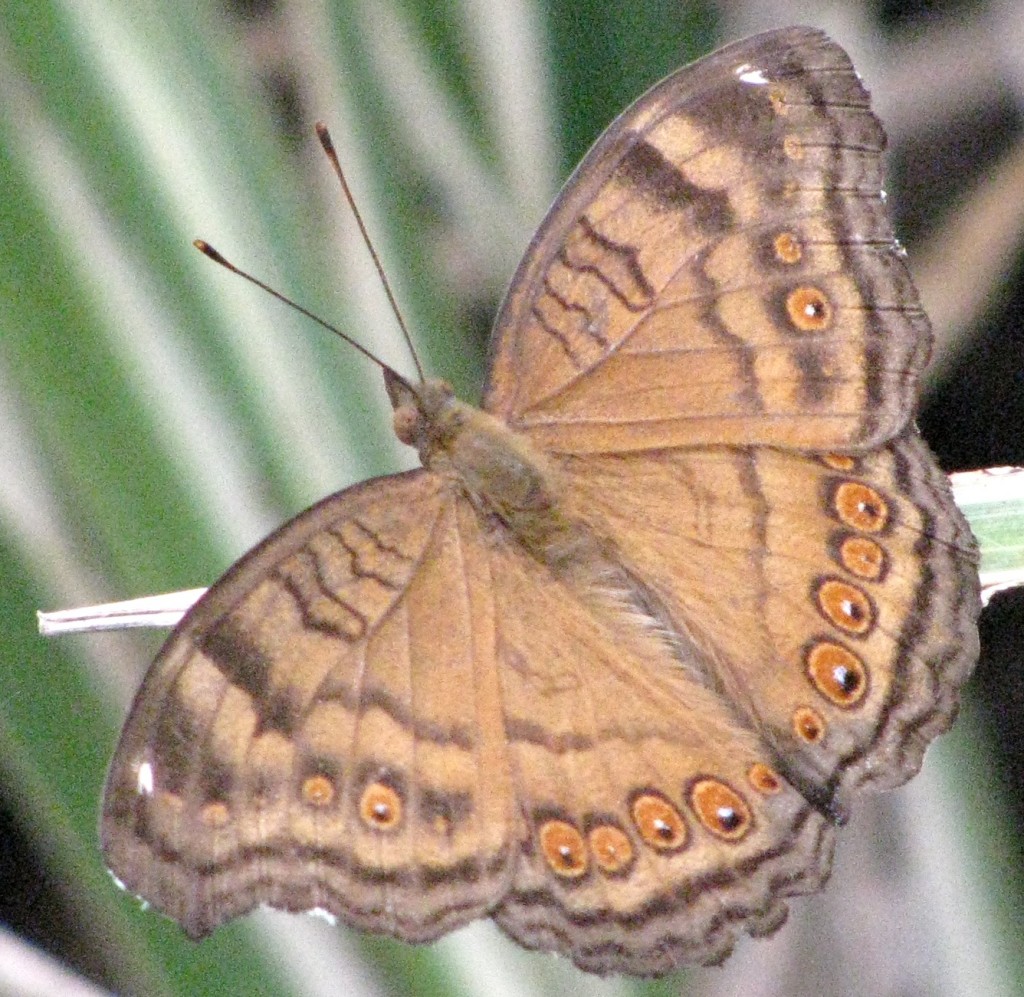
Chocolate Argus (© Magi Nams)

Male Blue Argus (© Vilis Nams)
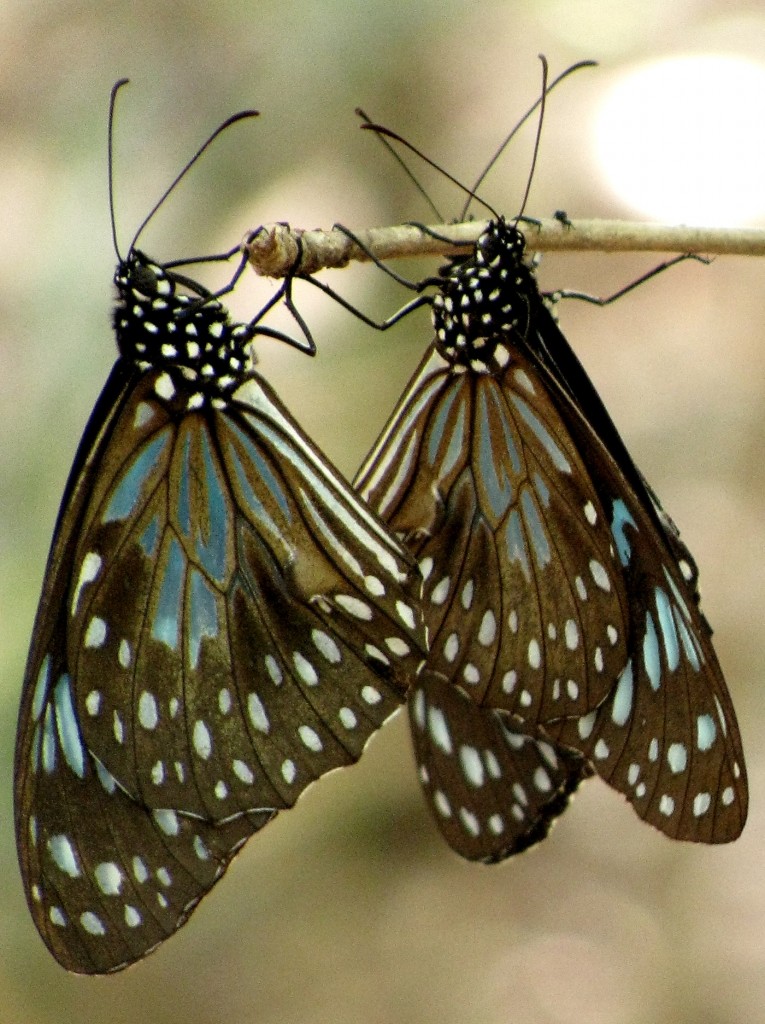
Blue Tigers (© Vilis Nams)
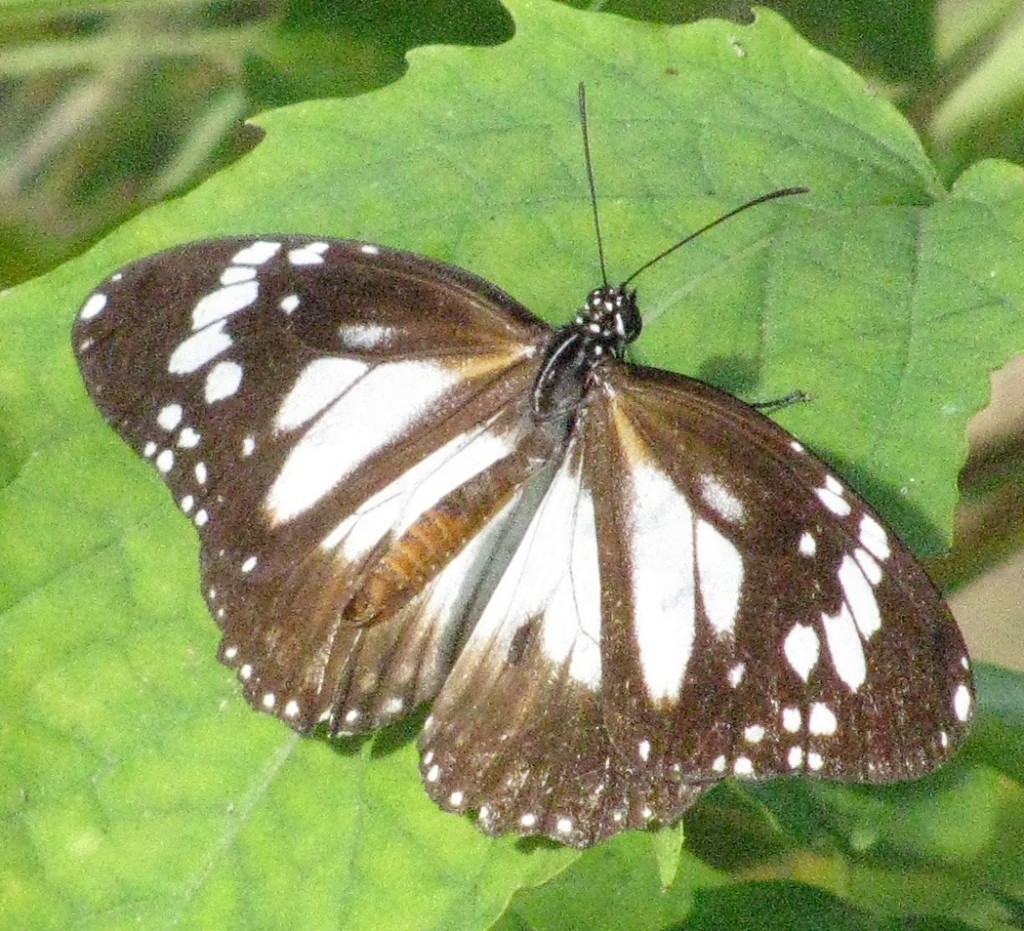
Male Swamp Tiger (© Magi Nams)
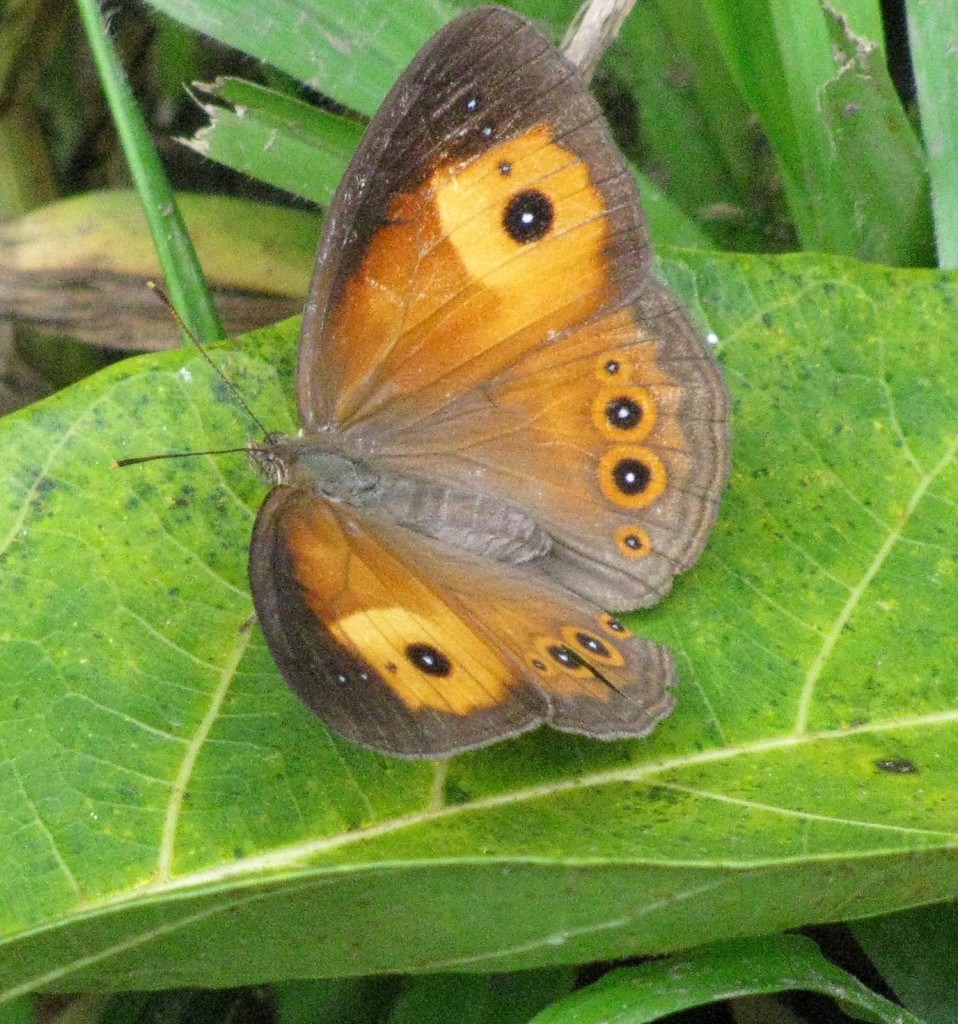
Male Orange Bush-brown (© Magi Nams)
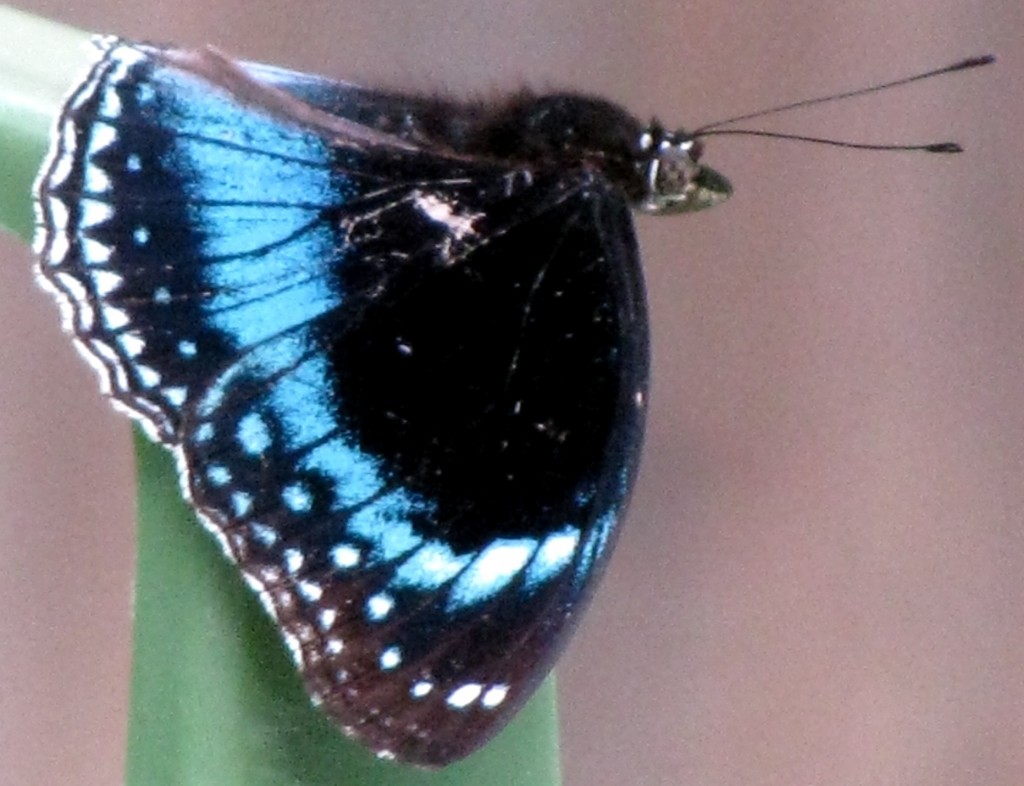
Male Blue-banded Eggfly (© Magi Nams)

Male Varied Eggfly (© Magi Nams)
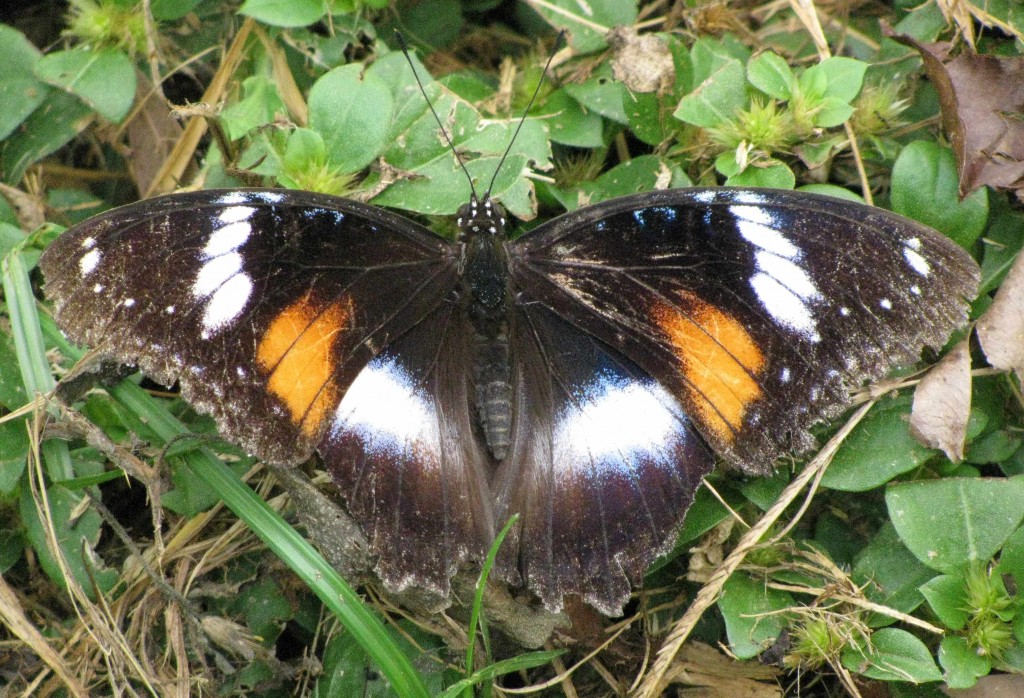
Female Varied Eggfly (© Magi Nams)
With five weeks remaining in my time in Australia, who knows what I may yet see or photograph. I have a real hankering for a portrait of a Ulysses swallowtail.
In late afternoon, rain pounded down, forming white curtains that screened the far side of the street. The early Wet that all those critters foretold – the flocking cockatoos, the black ants seeking higher ground, the jumping fish, and the lizards holding their heads up with mouths open – has arrived. (see October 9 post, http://maginams.ca/2010/10/09/). On Vilis’s return from work at James Cook University (fortunately today in the car rather than on his bicycle) he spoke of a torrential downpour at the uni, which eased as he neared our suburb of Rosslea. One of the professors, who loaned him an umbrella to get to the car, told him that when Townsville gets a ‘Good Wet,’ it usually starts in November. I think this dry tropical city is in for one of those this year.
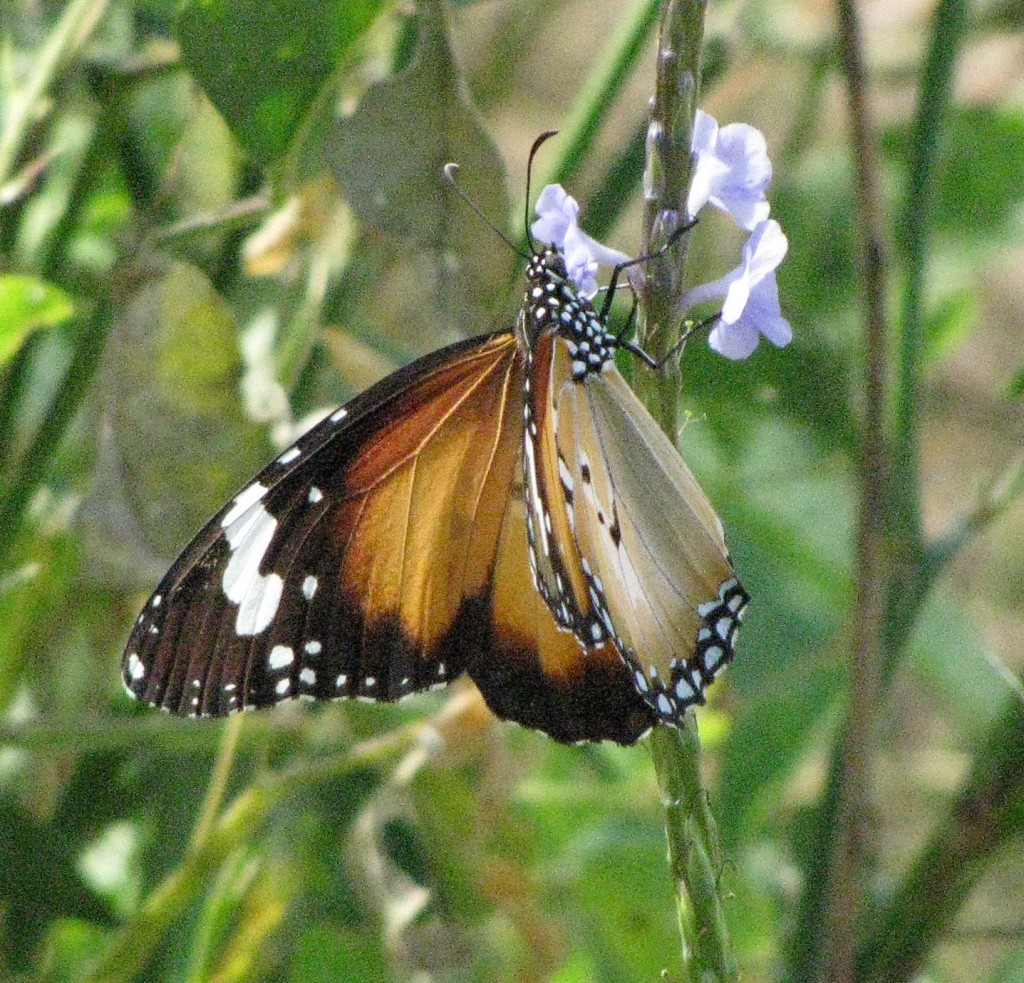
Female Lesser Wanderer (© Magi Nams)
References:
1. Michael F. Braby. The Complete Field Guide to Butterflies of Australia. 2004. CSIRO PUBLISHING, Collingwood, Victoria, pp. 15-22; 2. Ibid, p. 9; 3. Ibid, pp. 9-10.
4. James Cook University. Butterflies of the Townsville Area. Accessed 8-Feb-2010. www.tesag.jcu.edu.au/staff/psv/butterflyTSV.html
5. Braby, p. 2; 6. Ibid, p. 1.


